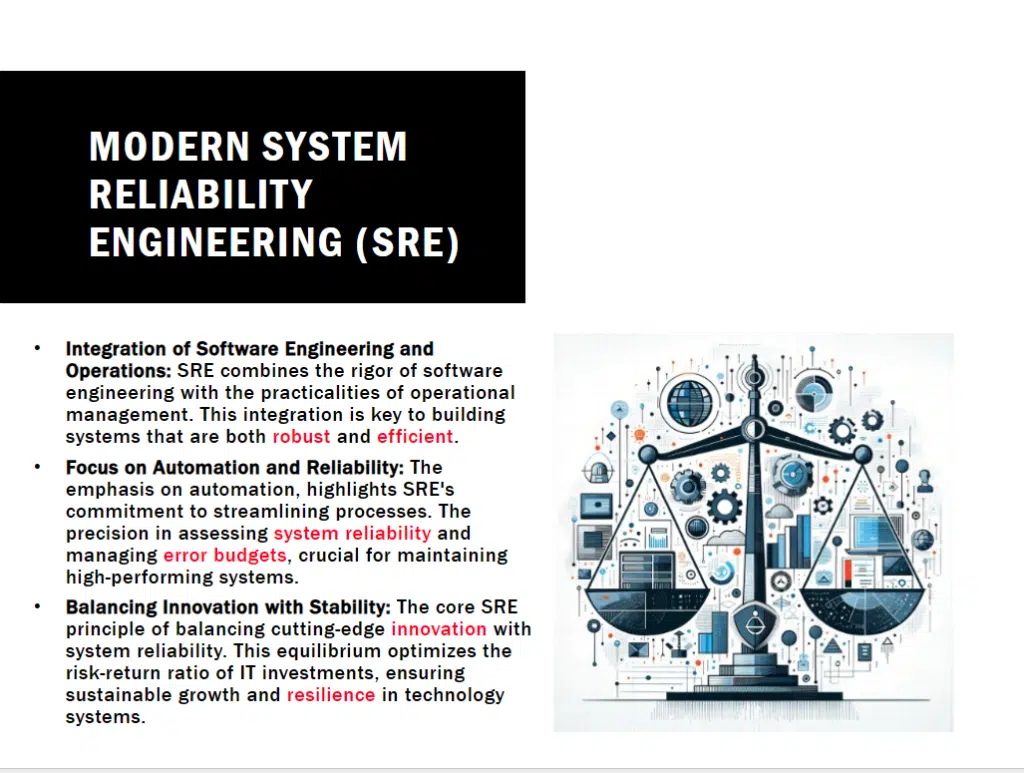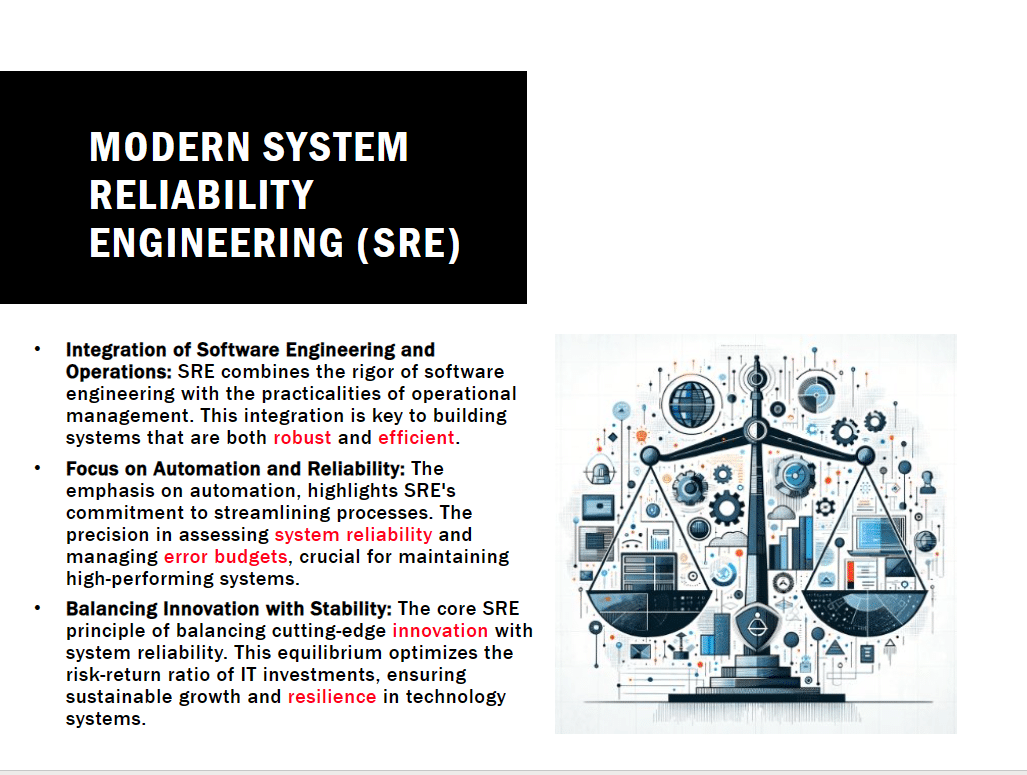In the ever-evolving landscape of technology, the role of ensuring consistent, efficient, and reliable system performance has become more crucial than ever. Enter Modern System Reliability Engineering (SRE) – a discipline that combines software engineering and IT operations to achieve high availability and performance. Let’s dive into what SRE is, its significance, and how it’s reshaping the tech world.

What is Modern System Reliability Engineering?
At its core, SRE is about applying a software engineering mindset to system administration topics. Born at Google in the early 2000s, it has emerged as a pivotal approach to managing large-scale, highly reliable systems. SRE focuses on automating operations tasks, creating systematized solutions to problems, and building scalable and reliable software systems.
Key Principles of SRE
- Automation Over Manual Labor: SRE prioritizes automation to manage systems, reduce toil, and increase efficiency.
- Measuring Reliability: Reliability is quantified using Service Level Indicators (SLIs), Service Level Objectives (SLOs), and Service Level Agreements (SLAs).
- Blameless Culture: Encourages learning from failures without pointing fingers.
- Error Budgets: Balances the need for reliability and the need for rapid innovation.
- Proactive Engineering: Anticipates and prevents problems before they occur.
Why is SRE Important?
In a digital world where downtime can mean lost revenue and damaged reputations, SRE offers a structured approach to maintaining service reliability. By blending development and operations, it ensures that software is not only built right but also functions reliably in the real world.
Benefits of SRE
- Improved Reliability and Uptime: By setting clear reliability goals, SRE helps in maintaining consistent service levels.
- Efficiency and Automation: Automation reduces repetitive tasks, freeing up engineers to focus on innovation.
- Faster Incident Response: With tools and practices for quick diagnosis and resolution, SRE minimizes the impact of issues.
- Better Risk Management: Error budgets and a proactive approach help in managing risks effectively.
How SRE is Changing the Tech Landscape
SRE is revolutionizing the way organizations approach system reliability and performance. It’s not just about keeping systems up and running; it’s about making them resilient, scalable, and efficient.
SRE in Practice
- Google: Where SRE originated, balancing feature releases and system reliability.
- Netflix: Known for its chaos engineering practices, ensuring service resilience.
- Amazon: Implements SRE principles to manage massive scale and complexity.
Challenges and Considerations
While SRE offers numerous benefits, it’s not without challenges. Implementing SRE requires a cultural shift, skilled personnel, and adapting existing systems to new practices. Organizations must carefully consider these factors for successful SRE adoption.
The Future of SRE
As technology continues to advance, the role of SRE is becoming more vital. With the rise of cloud computing, AI, and machine learning, the scope of SRE is expanding. It’s not just about maintaining systems; it’s about creating intelligent, self-healing systems that can adapt and evolve.
Conclusion
Modern System Reliability Engineering is more than a practice – it’s a mindset. It’s about building and operating systems that can withstand the test of time and scale. As we move forward, SRE will continue to be a key player in the tech arena, ensuring that systems are not just built but are reliably operational, thus driving the future of technology towards greater heights of innovation and stability.




